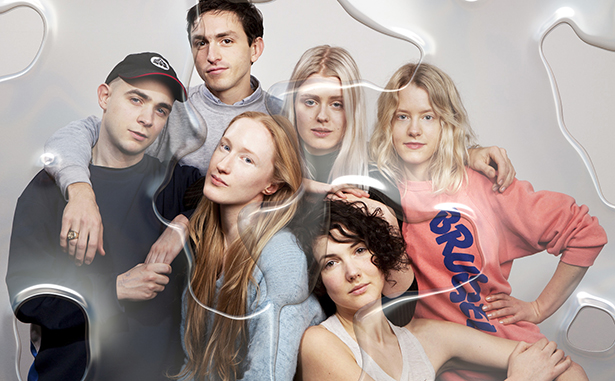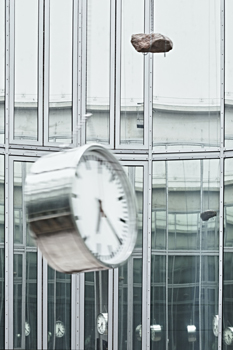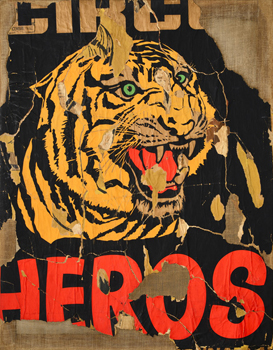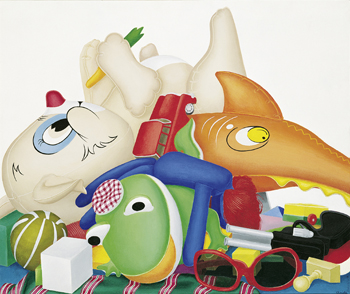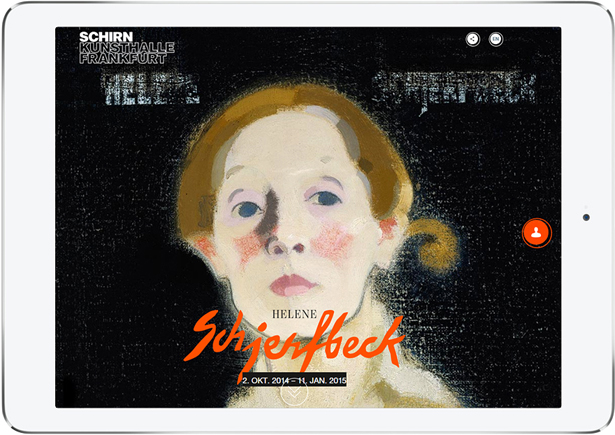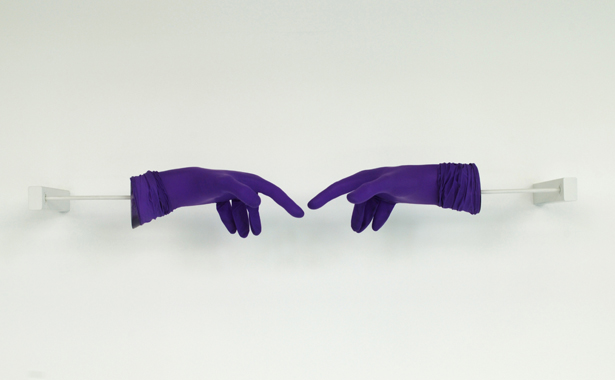NOTHING
12 JULY-1 OCTOBER 2006
SCHIRN KUNSTHALLE FRANKFURT
Römerberg
60311 Frankfurt, Germany
phone: ( 49-69) 29 98 82-0
fax: ( 49-69) 29 98 82-240,
welcome@schirn.de
Stillness, emptiness, silence in the image-ridden visual society of today, the pause, the blank, the gap are increasingly gaining in significance. The avant-garde artists of the 1960s and 70s like John Baldessari or Art & Language respond with skepticism or downright rejection to the idea of visual representation of a reality of ever more elusive complexity. Art counters the daily flood of visual information by emptying the image space. Post-minimalists and neo-conceptualists like Joëlle Tuerlinckx, Spencer Finch, or Martin Creed poetically or ironically translate the experience of nothingness into installations, paintings, or sculptures. Reduction of effects and sensations creates a particular awareness of things and phenomena that are not visible at first sight. The gaze into the void unveils the peripheral. What remains is multifarious, equivocal nothingness.
Ever since Modernism or, at the latest, since the emergence of Concept Art in the 1960s, artists have intensively explored ideas of nothingness. The question of nothingness in Modernism quickly leads to the idea of non-representation abstraction as the visual refusal of the representational image in art; an attitude that has many fathers: first of all, there is Kazimir Malevich with his Black Square of 1915, a Modernist myth and at the same time the embryo of all possibilities which marked the zero point of painting. Reduced to pure color and pure form, the emptying of the image surface seems complete in this monochrome rectangular shape. Final paintings, though, were made by many: Ad Reinhardt, for example, made exclusively and almost obsessively uniform, nearly indistinguishable black ultimate paintings from 1960 until his death. As the well-known saying by Harold Rosenberg puts it: Rothko [] pulled down the shades, Newman closed the door, and Reinhardt shut off the lights.
In the late 1960s, the idea of negation was followed by the negation of the negation. The broad theoretical background of the concept artists of the period with their analytical view of the coordinates of the artwork, art production, and art business and their apparently untiring exploration of materiality and space has affected, in its complexity, even the youngest generation of contemporary artists and makes itself felt today in a variety of strategies. Thus, for example, the post-minimalists and neo-conceptualists create poetic installations and paintings characterized by radically reduced representationalism, though often informed by a fine sense of irony. Reduction of effects and sensations creates a particular awareness of things and phenomena that are not visible at first sight.
Messages like these were often heard in this period. Joseph Kosuth, for example, created comprehensive series in which he used language to explore the conditions governing art, as did John Baldessari whose large canvases instigate astute reflections on the image itself, its references, methods, attitudes, and opinions on production and presentation. Everything is purged from this painting but art, no ideas have entered this work, one of his panels asserts. Baldessari does not only strip the image of any conventional artistic articulation but has these works made with strict artlessness by a sign painter, thus undercutting even any conceptual claim.
Given that artistic articulation in Concept Art derives from an idea, there is not much left if this very idea is exorcized in a play of language. Such ironic conceptualism has had lasting effects on contemporary art. Martin Creed owes it the larger part of his strategy which culminates in the laconic reticence of a piece like Work No. 401 (2005), consisting of a small loudspeaker with a sound loop that makes a lapidary pfft sound only. The sound was produced by the artist himself as an act of acoustic self-renunciation. It makes one think of a shrugging What do I care? Like Baldessari, Creed seems to adhere to an unassuming minimalism with this work, which places him in line with a whole number of contemporary art positions such as Martin Kippenberger, Ceal Floyer, or Tom Friedman. Friedman shows 1,000 Hours of Staring (19921997), a sheet of paper stared at by the artist for one thousand hours, which marks an art process beyond the concept of the instantiation of the stroke of genius or divine inspiration. The work reflects the labors of a persistence leading to nothing. When Friedman is asked if he really took the trouble of staring at the paper for one thousand hours and when he starts speaking about how he made a meditation of it and kept note of his working hours, this is almost too explicit and specific, curtailing the imagination. In the end, the white paper induces a reflection on time, which, however, is almost entirely left to the viewer by the artists. Nothing is only where you dont see anything.
Seeing is not enough: while the more recent art history has largely dismissed the visible, the heirs of Duchamp, in their nihilistic impulse, often go one step further, abandoning the object nature of art as such. This is the approach taken by Karin Sander in her piece Zeigen (2006), which confronts visitors with an existing empty room or empty gallery walls which only show the usual title labels of the works exhibited. The works themselves are missing or not to be seen. Their presence, however, is perceptible through a different sense. The artist asked a number of fellow artists such as Sylvie Fleury, Hamish Fulton, Mona Hatoum, or Lawrence Weiner to choose a work of their own and give an audio description of it. The viewer is liberated from vision and referred to an alternative mode of perception which leads him from a concrete, obvious, accustomed, trained to an imaginative, aural aesthetic experience. In this sense, nothingness cannot exist for there is always imagination, the viewers mind power.
ARTISTS EXHIBITED: Art & Language, John Baldessari, Robert Barry, Joseph Beuys, Stefan Brüggemann, James Lee Byars, Martin Creed, Spencer Finch, Ceal Floyer, Tom Friedman, Jeppe Hein, Martin Kippenberger, Joseph Kosuth, Imi Knoebel, Christine Kozlov, Nam June Paik, Karin Sander, Joëlle Tuerlinckx, Luc Tuymans, Remy Zaugg.
CATALOG: Nichts/Nothing, ed. by Martina Weinhart and Max Hollein, with a foreword by Max Hollein and contributions by Mieke Bal, Ulrike Gehring, and Martina Weinhart. German/English, 200 pages, 49 illustrations, Hatje Cantz Verlag, Ostfildern,
ISBN-10: 3-7757-1816-8, ISBN-13: 978-3-7757-1816-5
DIRECTOR: Max Hollein CURATOR: Martina Weinhart
OPENING HOURS: Tue, FriSun 10 a.m.7 p.m., Wed and Thur 10 a.m.10 p.m.
INFORMATION: www.schirn.de

